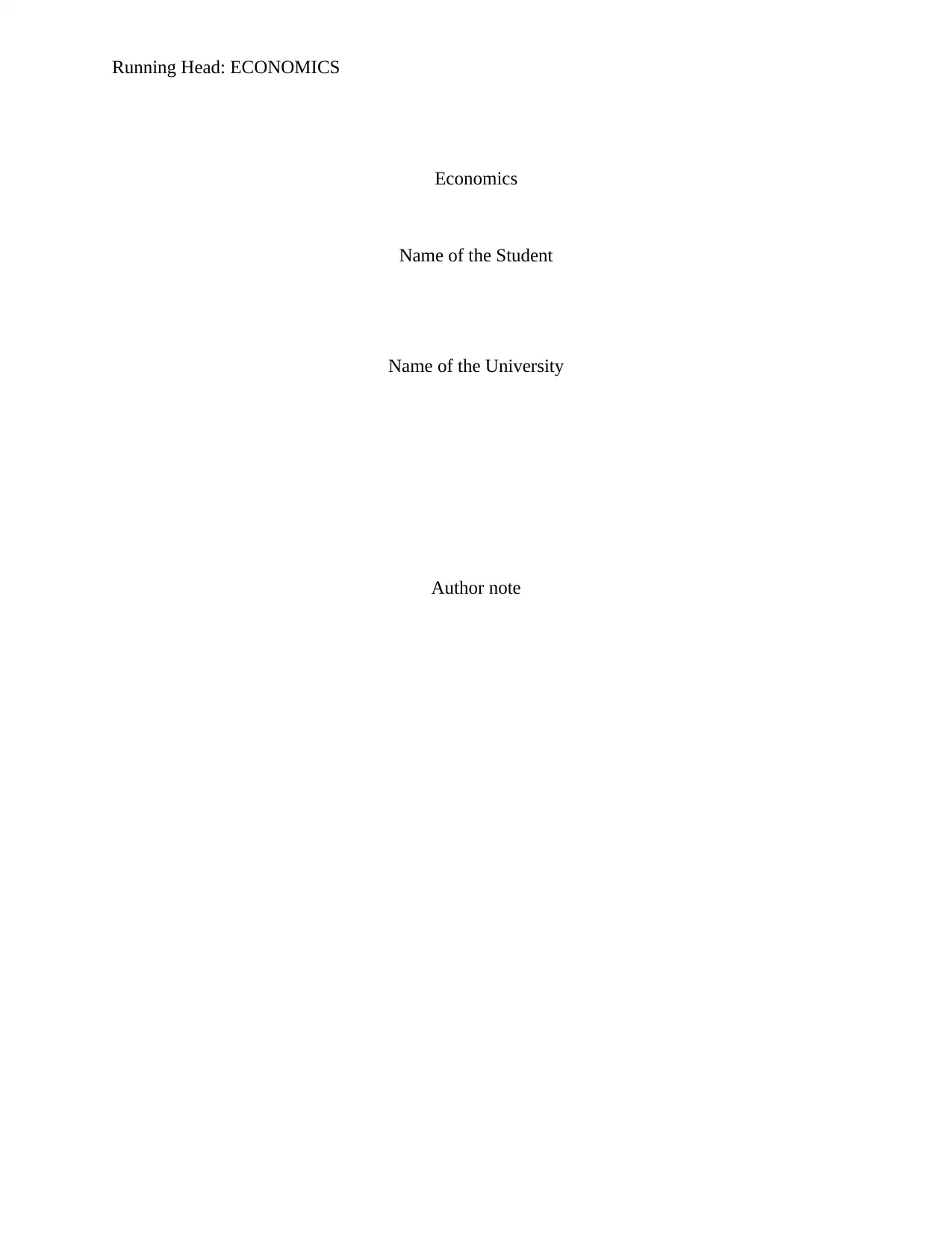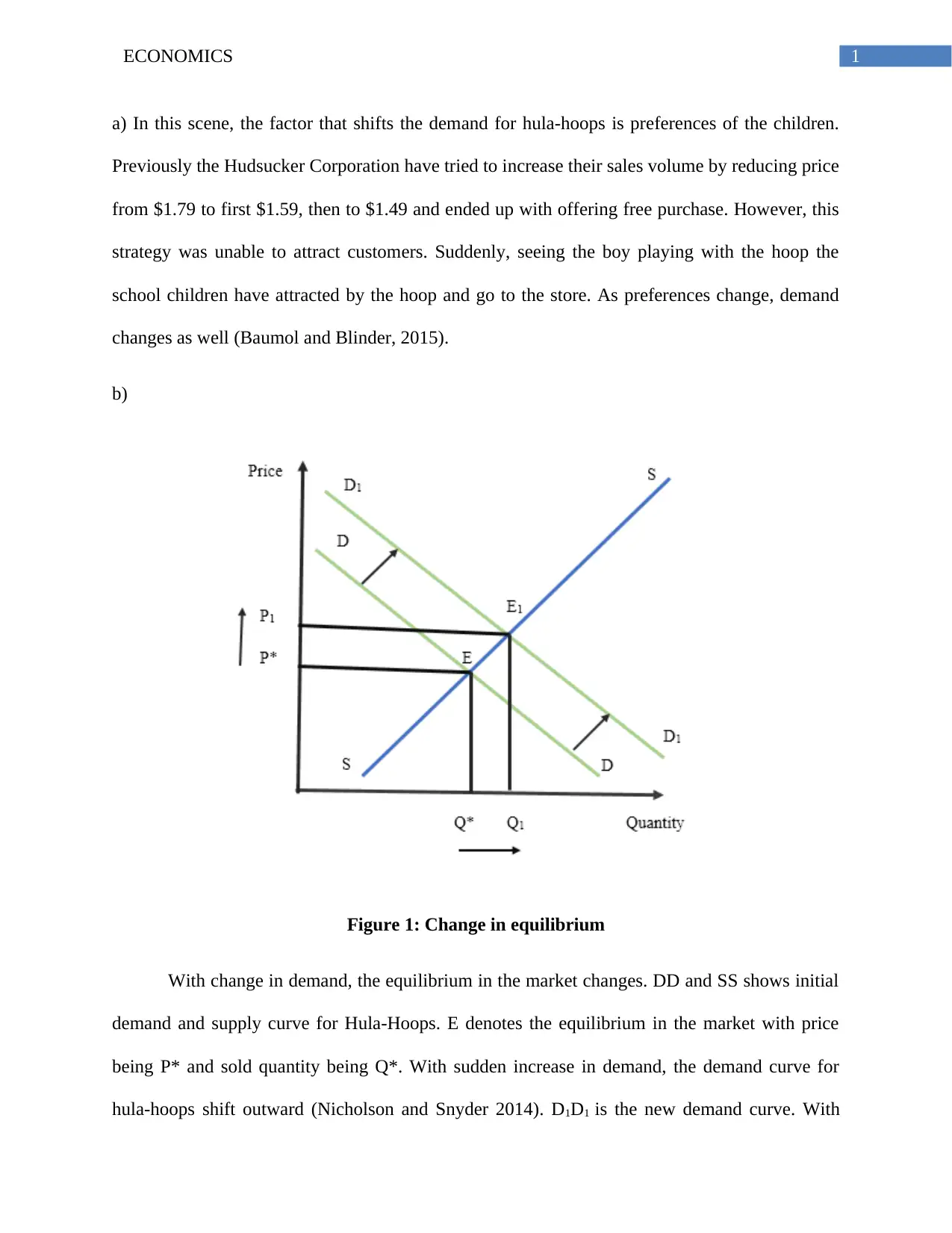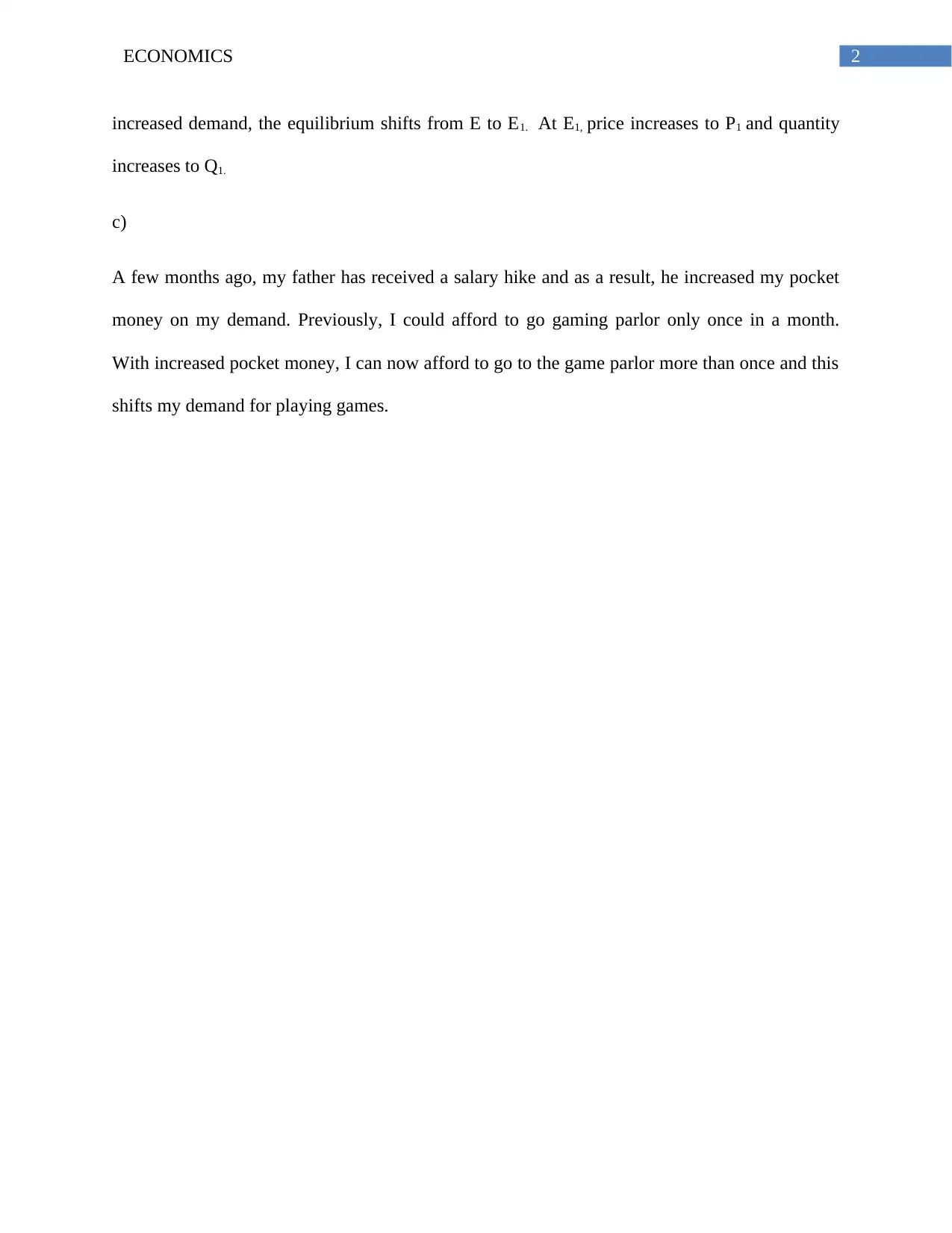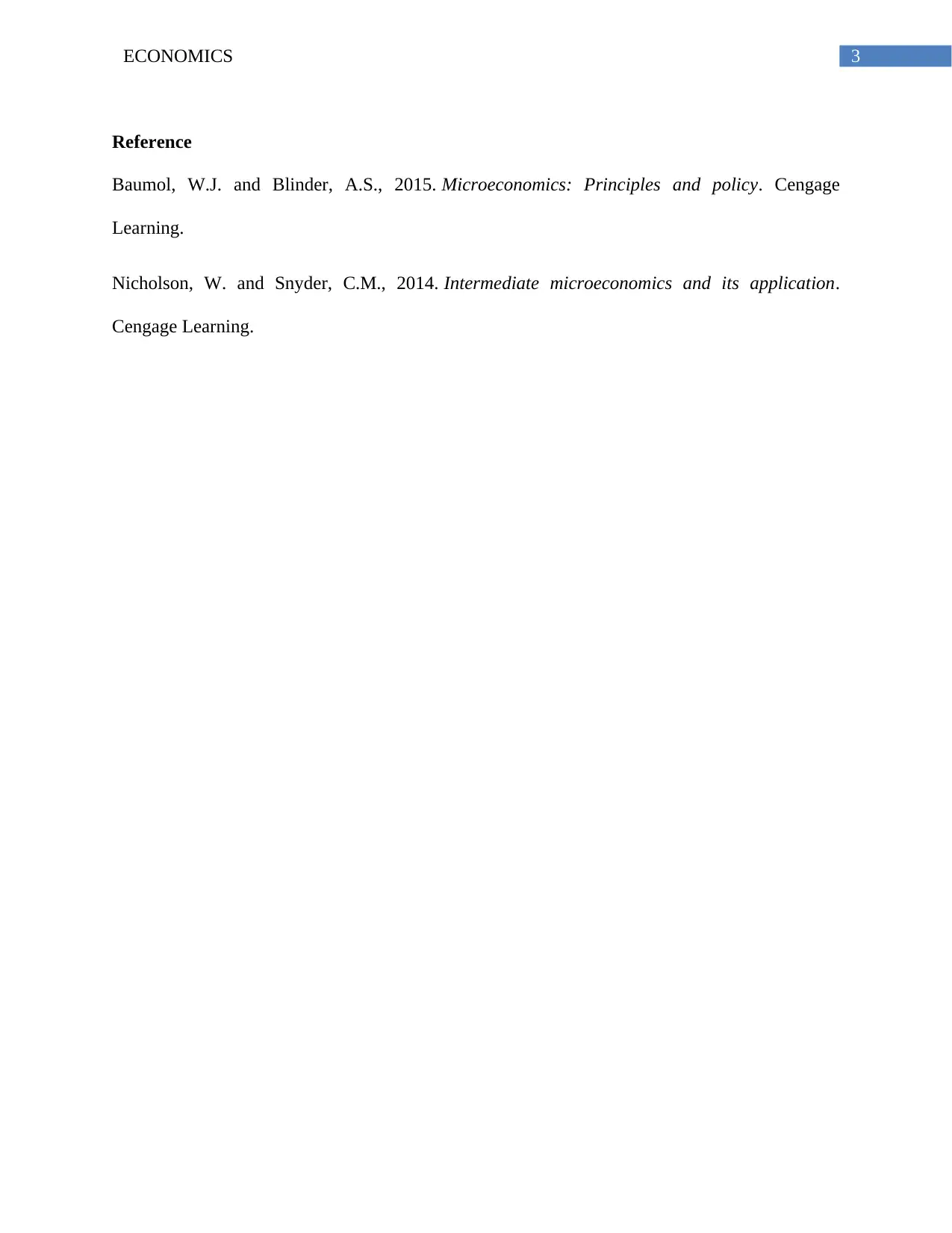Economics Assignment: Analysis of Hula-Hoop Market Dynamics
VerifiedAdded on 2020/05/16
|4
|333
|149
Homework Assignment
AI Summary
This economics assignment delves into the market dynamics of hula-hoops, examining how shifts in demand, influenced by factors such as consumer preferences, impact market equilibrium. The assignment uses a case study of the Hudsucker Corporation to illustrate these concepts. It explains how an initial attempt to increase sales through price reductions failed to boost demand until a change in consumer preferences, specifically children's interest, led to a significant increase in demand. The solution includes a graphical representation of the demand and supply curves, showing the shift in the demand curve and the resulting changes in equilibrium price and quantity. The assignment also provides a personal example, demonstrating how increased pocket money led to increased demand for gaming parlor visits. The references used in the assignment are Baumol and Blinder's 'Microeconomics: Principles and Policy' and Nicholson and Snyder's 'Intermediate Microeconomics and its Application'. This assignment provides a clear understanding of demand and supply principles and their application in real-world scenarios.
1 out of 4











![[object Object]](/_next/static/media/star-bottom.7253800d.svg)